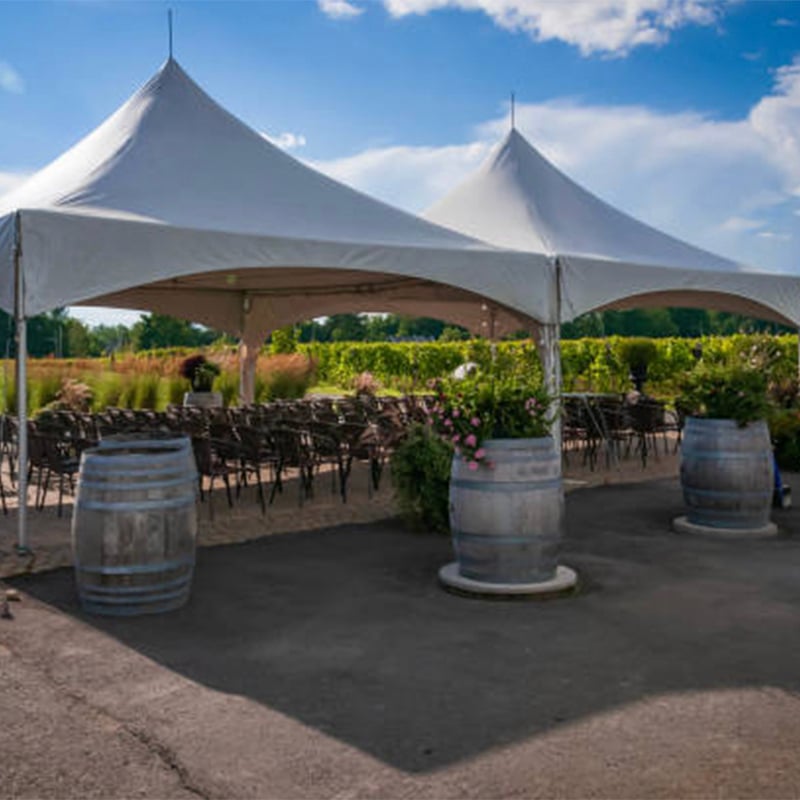The Importance of Proper Ventilation in an Exhibition Tent
When setting up an exhibition tent, there are many factors to consider to ensure the success of your event. One often overlooked aspect is ventilation. Proper ventilation plays a crucial role in creating a comfortable and safe environment for both exhibitors and attendees. In this article, we will explore Why Proper Ventilation is Essential in an Exhibition Tent and how it can contribute to the overall success of your event.
1. Ensuring Fresh Air Circulation of an Exhibition Tent
One of the primary reasons why proper ventilation is essential in an exhibition tent is to ensure fresh air circulation. With a large number of people gathered in a confined space, the air quality can quickly deteriorate without proper ventilation. Poor air quality can lead to discomfort, fatigue, and even health issues for attendees and exhibitors. By providing adequate ventilation, you can maintain a constant flow of fresh air and create a more pleasant environment for everyone.
2. Preventing the Build-up of Heat of an Exhibition Tent
In an exhibition tent, especially during warmer months or in crowded spaces, the build-up of heat can be a significant concern. Without proper ventilation, the temperature inside the tent can rise rapidly, making it uncomfortable for both exhibitors and attendees. This can lead to decreased participation and overall dissatisfaction with the event. By ensuring proper ventilation, you can effectively regulate the temperature and prevent the build-up of heat, creating a more enjoyable experience for everyone involved.
3. Reducing Condensation and Humidity
Exhibition tents can be susceptible to condensation and high humidity levels, particularly in humid climates or during events that involve cooking or other activities that release moisture into the air. Without proper ventilation, condensation can form on the walls and ceiling, leading to a damp and uncomfortable environment. High humidity levels can also damage sensitive equipment and exhibits. Proper ventilation helps to reduce condensation and humidity, keeping the tent dry and preventing any potential damage.
4. Enhancing the Air Quality of an Exhibition Tent
Poor air quality can have a significant impact on the overall experience of an exhibition. Dust, odors, and fumes from various sources, such as cooking or machinery, can quickly accumulate in a confined space, leading to discomfort and potential health risks. By incorporating proper ventilation systems, you can effectively filter and remove these pollutants, improving the air quality and creating a more pleasant and healthy environment for everyone in attendance.
5. Ensuring Fire Safety of an Exhibition Tent
Fire safety is a crucial aspect of any event, and exhibition tents are no exception. Proper ventilation plays a vital role in preventing the build-up of flammable gases and reducing the risk of fire. In the event of a fire, proper ventilation also helps to facilitate the escape of smoke and heat, allowing for a safer evacuation. By ensuring adequate ventilation, you can significantly enhance the fire safety measures in your exhibition tent.
6. Promoting Comfort and Productivity of an Exhibition Tent
A well-ventilated exhibition tent not only contributes to the comfort of attendees and exhibitors but also promotes productivity. When people are comfortable and breathing in fresh air, they are more likely to stay engaged, focused, and energized throughout the event. This can result in increased participation, longer stays, and a more positive overall experience for all involved.
7. Minimizing the Spread of Airborne Illnesses
In recent times, the importance of proper ventilation in preventing the spread of airborne illnesses has become even more evident. Exhibition tents, with their enclosed spaces and close proximity of individuals, can be particularly susceptible to the transmission of viruses and bacteria. By ensuring proper ventilation and air circulation, you can help minimize the risk of spreading diseases and contribute to the health and safety of all attendees.
8. Preventing Unpleasant Odors of an Exhibition Tent
In a crowded exhibition tent, unpleasant odors can quickly become an issue. Whether it's from cooking, chemical products, or simply body odor, these smells can create a negative experience for attendees. Proper ventilation helps to remove and replace stale air, preventing the accumulation of unpleasant odors and ensuring a more pleasant environment for everyone.
9. Protecting Exhibits and Equipment
Exhibition tents often house expensive exhibits, equipment, and displays. Without proper ventilation, high humidity levels and poor air quality can damage sensitive materials and electronic equipment. Moisture, dust, and pollutants can lead to corrosion, mold growth, or malfunctioning of delicate machinery. By providing adequate ventilation, you can protect your exhibits and equipment, prolonging their lifespan and minimizing the risk of costly damages.
10. Meeting Safety Regulations
Finally, proper ventilation in exhibition tents is often a requirement to meet safety regulations and obtain necessary permits. Local authorities and event organizers may have specific guidelines regarding ventilation systems to ensure the well-being of everyone present. By adhering to these regulations, you can avoid potential penalties, ensure the safety of your event, and create a positive reputation for future exhibitions.

